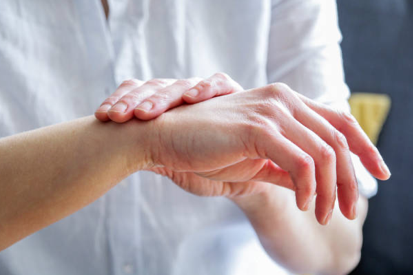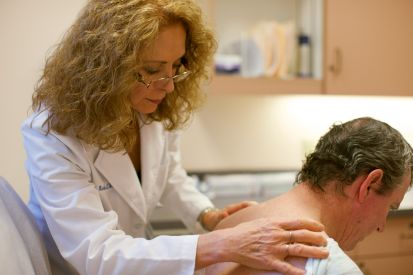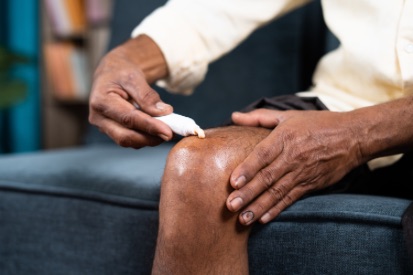FAQs
Answers to Our Most Common Questions
In an effort to completely educate our patients BEFORE they arrive, we have answers the most common questions we receive. Please let us know if you have any additional questions or concerns not addressed on the website on in our printed material.
Caring For Your Skin Post-Surgery



Post-Surgery FAQs
Skin cancer is a microscopic process that is not visible to the naked eye. Very commonly, skin cancers have a "tip of the iceberg"| growth pattern. What we can see on the outside is only a small fraction of a much larger process on the inside. A skin cancer that appears very small can actually be very large microscopically. For this reason, we cannot predict the size of any skin cancer in advance. On average, most cancers are 50-100% bigger than they appear to be once they are removed. Mohs surgery allows the surgeon to only remove what is absolutely necessary to cure the cancer. You can be assured your surgical defect will be as small as possible with Mohs surgery.
Since we cannot predict the size of a skin cancer in advance, we also cannot determine the method of repair until the cancer has been completely removed. It is best to divide the surgery process into two phases. First is the removal phase when Mohs surgery is performed. After the skin cancer has been removed, Dr. Viehman will review the size of the surgical defect with you and now be able to discuss the second phase of the process: reconstruction. There are several options for repairing a wound, and Dr. Viehman will review your options and help you decide which is the best for you. Fellowship-trained Mohs surgeons from the American College of Mohs Surgery have extensive training and experience in surgical reconstruction. Dr. Viehman has performed thousands of surgical repairs and does them every day.
The Basic Choices Are:
Direct Closure - The wound edges are brought directly together in a linear closure. Most surgical wounds are circular, and the surgeon must convert the circle to a line. This requires removing extra tissue at each end, which allows the closure to lie flat without puckering. The length of linear closures is longer than the original defect for this reason.
Skin Flaps - This method involves recruiting nearby tissue to cover the surgical wound. There are many different types and designs of skin flaps. Smoking has been shown to significantly decrease flap survival. We recommend you stop smoking two weeks before and after your surgery.
Skin Grafts - This method borrows "extra" skin from another part of the body to serve as a "patch" that covers the defect. This donor skin usually comes from the collarbone area or in front of the ear along natural creases. Skin grafts are useful for larger wounds and in areas where flaps and direct closure are not possible. Smoking has been shown to significantly decrease flap survival. We recommend you stop smoking two weeks before and after your surgery.
Second Intention - This is a medical term for allowing a wound to heal on its own without further surgery. In the right location, this can be the best option providing excellent cosmetic results. A bandage is worn for 6-12 weeks while the area heals.
Referral - Our office works with a variety of specialists should your cancer reconstruction require further expertise.
There are two concerns that are critical to your healing after skin cancer surgery, proper function and an acceptable cosmetic outcome. Mohs surgeons are experts in determining the best method to repair your wound that maintains function while providing optimal cosmetic healing. We are very concerned about giving you the very best result from your skin cancer surgery. Scarring, however, is unpredictable and different in various parts of the body. Some areas are known to heal very well while others are notoriously more likely to heal with thickened scars. Every patient also has his or her own biologic predisposition to wound healing that affects the outcome. SeaCoast Skin Surgery is determined to treat every outcome like it is their own. If your skin cancer does not heal properly, then there are many ways to improve the appearance by scar revision, laser "sanding," and injections. Sutures are removed in one to two weeks in most cases. Makeup can usually be worn shortly after suture removal. Over the next three to four weeks, mild swelling, redness, and tenderness will begin to subside substantially. Most wounds tend to tighten up or contract during the first three to six months before relaxing. Many of our repairs are sutured with "pleats" or raised edges along the suture line on purpose. As a scar contracts during this three-to four-month period, it will flatten the suture line. Most wounds take nine to twelve months to completely mature and settle down into their permanent result. Often we will wait this period of time before intervening since there can be dramatic changes even after a scar is six months old.
After any type of surgery, it is a good idea to take it easy for at least one week. Patients can usually resume exercise and recreational activities in several weeks, but this is highly dependent upon the location and size of your skin cancer and reconstruction. We recommend you plan on several weeks of light activity.
Sunscreen Recommendations

EltaMD UV Clear SPF 46 original
Oil-free EltaMD UV Clear helps calm and protect sensitive skin types prone to discoloration and breakouts associated to acne and rosacea. It contains niacinamide (vitamin B3), hyaluronic acid and lactic acid, ingredients that promote the appearance of healthy-looking skin. Very lightweight and silky, it may be worn with makeup or alone. Choose from tinted and untinted formulas for use every day. 1.7 oz / 48 g

EltaMD UV Physical SPF 41
For oil-free sun protection with just a touch of color, EltaMD's lightly tinted UV Physical is a healthy choice. This chemical-free mineral sunscreen has antioxidants to neutralize free radicals. Water-resistant UV Physical withstands water, humidity and perspiration. 3 oz

